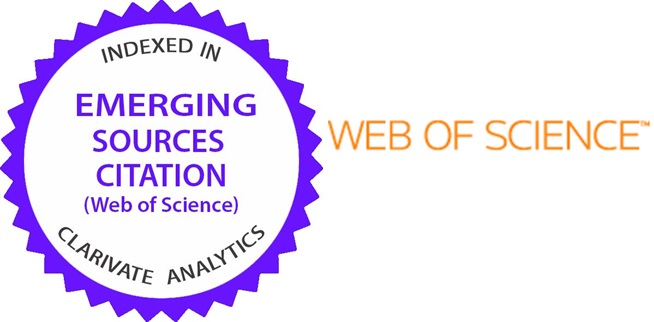An Institutional Approach to Understanding the Lack of Prudence in Rating by Bangladeshi External Credit Assessment Institutions (ECAIS)
DOI:
https://doi.org/10.31436/ijema.v28i1.782Keywords:
Basel accord, ECAI, Failure of omission, Moral hazard, RWAAbstract
The standardization of credit risk quantification methodologies under the Basel regulations has been promoted by Bangladesh Bank since 2009, where the Bangladeshi external credit assessment institutions (ECAIs) credit information has been expected to contribute to improved credit risk management by Bangladeshi banks and enhanced adequate capital buffer. However, the standardization seems not to bring positive outcomes to the banking industry in Bangladesh. This paper aims at investigating the ill-designed regulations for Bangladeshi ECAIs as the root cause of it, and to make sense of it under the failure of omission by the regulators. The study adopted an institutional approach and conducted in-depth interviews to investigate the research problem. This paper contributes to provide an alternative explanation for the highly accumulated non-performing loans in the regulated banks in Bangladesh.
References
Bangladesh Bank (BB). Guidelines for Recognition of Eligible External Credit Assessment Institutions (ECAIs), Dhaka: Banking Regulation and Policy Department, 2009.
______. Revised Guidelines on Risk Based Capital Adequacy (RBCA) for Banks. Dhaka: Banking Regulation and Policy Department, 2010.
______. Financial Stability Report. Issue 4. Dhaka: Financial Stability Department, 2013.
______. Implementation of Basel III in Bangladesh. Dhaka: Banking Regulation and Policy Department, 2014.
______. Financial Stability Report. Issue 8. Dhaka: Financial Stability Department, 2017.
______. Financial Stability Report. Issue 9. Dhaka: Financial Stability Department, 2018.
Bangladesh Securities and Exchange Commission (BSEC). Credit Rating Companies Rules. 1996. Dhaka: BSEC publications, 1996.
______. Annual Report 2017-18. Dhaka: BSEC Publications, 2018.
Boot, A., T.T. Milbourn, A. Schmeits. “Credit Ratings as Coordination Mechanisms.†Review of Financial Studies 19, no. 1 (2006): 81-118.
Chan, S. “Documents Shows Internal Qualms at Rating Agencies.†The New York Times, April 22, 2010. https://www.ny times.com/2010/04/23/business/23ratings.html
Choi, H. and S. Choi. “What Drives Credit Rating Changes? A Return Decomposition Approach.†Asia-Paciï¬c Journal of Financial Studies 44, no. 6 (2016): 899-931.
Coffee, John C. Gatekeepers: The Professions and Corporate Governance. Oxford: Oxford University Press, 2006.
Coffee, J. C. “Ratings Reforms: The Good, The Bad and The Ugly.†Harvard Business Law Review 1, (2011): 231-78.
Darbellay, Aline. Regulating Credit Rating Agencies. Cheltenham: Edward Elgar Publishing, 2013.
Freixas, Xavier, Luc Laeven, José-Luis Peydró. Systemic Risk, Crises, and Macroprudential Regulation. Cambridge: The MIT Press, 2015.
Government of Japan. Financial Services Agency. Financial Instrument and Exchange (FIE) Act. The Act for the Amendment of the Securities and Exchange Act, etc. (Act No. 65 of 2006) and the Act for the Development, etc. of Relevant Acts for Enforcement of the Act for the Amendment of the Securities and Exchange Act, etc. (2006 Act No. 66) .Tokyo: Financial Services Agency Publications, 2006.https://www. fsa.go.jp/common/law/fie01.pdf
International Organization of Securities Commission (IOSCO). Code of Conduct Fundamentals for Credit Rating Agencies Final report. Madrid: IOSCO, 2015. https://www.iosco.org/libra ry/pubdocs/pdf/IOSCOPD482.pdf.
Kammoun, R. and A. Louizi. “Credit Rating Agencies: Development and Analysis of Business Models.†Journal of Contemporary Management 3, no. 2 (2015): 53-66.
Miglionico, Andrea. The Governance of Credit Rating Agencies Regulatory regime and Liability Issues. Cheltenham: Edward Elgar Publishing, 2019.
Partnoy, F. “The Siskel and Ebert of financial Markets? Two Thumbs Down for the Credit Rating Agencies.†Washington University Law Quarterly 77, no. 3 (1999): 619-713.
Partnoy, F. “How and Why Credit Rating Agencies Are Not Like Other Gatekeepers.†University of San Diego0 Legal Studies Research Paper series no. 07-46, University of San Diego, 2006.
Partnoy, F. “What's (Still) Wrong with Credit Ratings.†Washington Law Review 92, no. 3 (2017): 1408-72.
Rahim, M.M. “Credit Rating Agencies’ Roles Have to be Reassessed.†Law and Financial Markets Review 4, (2010): 433-38.
Santomero, A.M. “Forwardâ€. In The Rating Agencies and Their Credit Ratings What They Are, How They Work and Why They Are Relevant, edited by Herwig Langhor and Patricia Langhor, x, 1st edition. Chichester: John Wiley and Sons Ltd, 2009.
Strier, F. “Rating the Raters: Conflicts of Interest in the Credit Rating Firms.†Business and Society Review 113, no. 4 (2008): 533-53.
Switzerland Bank for International Settlement. Basel Committee on Banking Supervision (BCBS). International Convergence of Capital Measurement and Capital Standards: A Revised Framework - Comprehensive Version’. BIS publications, 2006.
______. Basel Committee on Banking Supervision (BCBS). Basel III: Finalising Post-Crisis Reforms. BIS Publications, 2017.
Tsunoda J., Muzaffar Ahmed, and Mohammed Tajul Islam. “Regulatory Framework and Role of Domestic Credit Rating Agencies in Bangladesh.†ADB South Asia Working Paper Series, no. 21. Asian Development Bank, 2013.
United Stated Securities and Exchange Commission (USSEC). Summary Report of Issues Identified in the Commission Staffs examination of Select Credit Rating Agencies. The Staff of the Office of Compliance Inspections and Examinations Division of Trading and Markets and Office of Economic Analysis. Washington D.C.: United Stated Securities and Exchange Commission publications, 2009. https://www.sec.gov/news/studies/2008/craexamination070808.pdf
______. Report to Congress on Assigned Credit Ratings. Division of Trading and Markets. Washington D.C.: United States Securities and Exchange Commission publications, 2012. https://www.sec.gov/news/studies/2012/assigned-credit-ratings-study.pdf
______. Report to Congress Credit Rating Agency Independence Study. Office of the Credit Ratings. Washington D.C.: United States Securities and Exchange Commission publications, 2013. https://www.sec.gov/news/studies/2013 /credit-rating-agency-independence-study-2013.pdf
Yang, H., H.J. Ahn, M.H. Kim, and D. Ryu. “Information Asymmetry and Investor Trading Behavior Around Bond Rating Change Announcements.†Emerging Markets Review, no. 32 (2017): 38-51.








